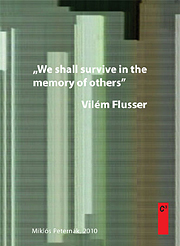Last year, a bill was introduced to the US Congress which has the intention of mitigating, and hopefully ending this tragedy. Though the provisions in the bill for auditing companies doing the secondary processing of conflict minerals, transforming them into the alloys and other refined materials used in the electronics industry could easily be abused, the bill itself, especially Section 2, is valuable in that it officially acknowledges the scope of the problem in some painful detail.
One of the consultants on the bill was Danish documentary filmmaker Frank Poulsen who managed to personally visit and even film in one of the mines and come back to tell about it.
His film project still needs funding and support. The problem, however, is deeper and more intractable than one film will be able to solve.
There is something endemic to our globalist economic system built on ever increasing debt which necessitates permanent economic growth. We are blackmailing ourselves into the future. And the the over-hurried, harried material result of this is not only bad design, which is obsolete with in a couple of years, but a design philosophy which does not take into account where the materials that must be mined to create the design on a globalized scale will come from, and what potential disruptions this new sourcing paradigm may cause on the local level.
What we see in North Kivu province of the Congo was partially caused by an 2004 EU declaration that solder used in electronics should no longer contain lead. Though this was ostensibly a good idea, the legislators far away in Brussels did not consider that the sudden jump in value of the suggested replacement material, cassiterite, was mostly to be found in a desperately poor and unstable part of the world, and that the gold rush there might have terrible consequences. According to US Congress figures over 6,000,000 people have died as result of the conflict minerals trade. When we look at the materiality of the digital image, we have a holocaust at our fingertips.
Or, rather, to be precise, because, here, out of respect for the murdered, we should be as precise as possible, the term holocaust is not accurate. 'holo' means 'all', 'caust' means 'burnt' which also means that the word holocaust is not entirely accurate to describe the nazi institutional genocide. And the murdered of the Congo were not burned, but were, at least, one would expect, buried, so perhaps a construction such as holotaph be fitting. We have a holotaph at our fingertips.
When it comes to mass-production on the global scale, good, conscientious design is a moral imperative. Bruce Sterling put a damper on the techno-giddy audience at his talk at a Vodaphone MoMo Mobile Monday event in November 2008. In his trademark sneer he cut to the core of the matter, design matters, but waste is good for business.
I have treated the issue of conflict minerals periodically previously on this blog.
On the occasion of the fifth anniversary of the opening of the Memorial to the Murdered Jews of Europe, on the site of the former Gestapo Headquarters in Berlin, let us also remember the millions whose lives and bodies have been sacrificed for the imagineered idealisms of today's globalist social networks.













No comments:
Post a Comment